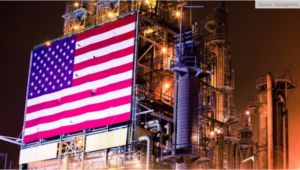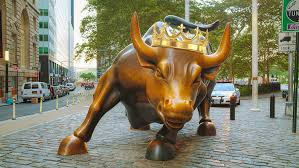ABN Amro ser optimistisk på et opsving i USA. USA blev et af de hårdest ramte lande, hvad dødsfald angår, men USA havde ikke så hård en lockdown som i Europa, og dette samt enorme finanspakker giver et kraftigere opsving end tidligere formodet. Arbejdsløsheden vil falde kraftigt, der kommer store investeringer i boligsektoren, og forbruget vil drøne løs. Inflationen vil stige i årets løb til omkring 2 pct. Væksten ventes i år at blive på 5,8 pct. og godt 4 pct. næste år. USA vil fra slutningen af 2021 have indhentet tabet under coronakrisen.
US Outlook 2021 – Hey, big spender!
- The US recession was more shallow than expected in 2020
- Lighter lockdown restrictions, and an aggressive policy response have helped
- The accelerating vaccine rollout points to a full reopening of the economy in Q2…
- …while President Biden’s bold spending will drive a much quicker closure of the output gap
- However, labour market frictions mean the fall in unemployment will be more gradual from here
- As a result, inflation should remain well behaved, and monetary policy will stay accommodative
A shallower recession and a stronger recovery
In its response to the covid-19 pandemic, the US has stood out from two angles: 1) from a public health standpoint, the US has been among the hardest hit; and 2) it is surprising therefore that the economic fallout has been comparatively shallow – the economy contracted by 3.5% in 2020, among the least in the developed world.
We see three main reasons for this. First, the initial lockdowns in March and April were not as strict as those seen elsewhere. Second, fiscal and monetary support for the economy has been among the most bold and aggressive seen globally. Third, state governments have been much more reluctant to join European countries in imposing new lockdowns in response to the second and third waves of the pandemic in the latter half of 2020.
Following a more shallow 2020 recession, the US also looks set to outperform in the vaccine-powered recovery of 2021. Newly-elected President Biden’s slim Senate majority, combined with prolonged easy monetary policy, gifts him significant power to spend aggressively to support the recovery over the coming years. As a result, we have significantly raised our growth forecasts, and expect a much more rapid closure of the output gap than we did previously.
Badly hit by the pandemic…
To understand where the US economy is headed this year, it is important to first understand why the economy has been much less hard hit than others. Although its third wave in the pandemic is now easing, the spread of new, more transmissible covid-19 variants could potentially mean it will enter a fourth wave over the coming months (notwithstanding the vaccine rollout, which is discussed later).
By almost any public health metric, the US has been among the hardest hit among developed economies by the pandemic – it has among the highest cumulative cases, hospital admissions, and deaths per capita. Despite this, the lockdown restrictions have been comparatively mild. To some extent, this can be explained by politics: Republican-run states have been much less willing to impose lockdowns than those run by Democrats.
…but much milder lockdown restrictions
More limited lockdown restrictions has meant a much smaller decline in activity. This is confirmed by the Google Mobility data, which shows around a 20% yoy decline in visits to retail & recreation establishments in January, compared to more than 50% declines in most European countries.
Aggressive fiscal support has also supported consumption
In addition to much milder lockdown restrictions, consumers have also surprised in their ability to substitute away from spending on restaurants and bars to higher physical goods consumption. This has likely been spurred by aggressive fiscal support, including two rounds of stimulus checks totalling $1800 per person (distributed to all but the highest earners), as well as generous top-ups to unemployment benefits that meant up to 40% of workers had been financially better off than when they were employed.
This substitution has mostly taken the form of higher online merchant sales, which have been 20-25% higher than the pre-pandemic period, as well as car sales (+5-10%) and home improvement (+10-15%). We previously thought extra consumption in these categories would be difficult to sustain, but there has so far been little sign of a major slowdown. Although surveys suggest consumers generally prefer to spend their stimulus checks on debt repayments or savings – and this is corroborated by the jump in the savings rate during the pandemic period – it appears that fiscal support has been so aggressive that it has nonetheless still had a stimulatory effect on consumption.
Outlook for consumption depends on the virus, but there are reasons for optimism
Looking ahead, consumption will remain supported by a fall in the elevated savings rate – which, at 13.7% in Q4, is the highest level since the mid-1970s – as well as further massive fiscal support in the form of a new $1.9trn (10% of GDP) package currently being debated in Congress. The latter proposes to extend generous top-ups to unemployment benefits, distribute yet another round of stimulus checks, as well as support for healthcare and state & local governments. We expect this to add 1.9pp to growth in 2021, and 0.6pp in 2022. With that said, further consumption gains will depend significantly on the scale of further reopening, which naturally will depend on the pace of vaccinations and the course of the virus itself. With regards vaccines, the US has been inoculating citizens at a relatively rapid pace of almost 1.5 million doses per day, enough for around 0.5% of the population.
Housing investment is also rapidly rebounding
Alongside consumption, other parts of the economy have recovered at a similarly rapid pace. Housing investment has recovered particularly strongly, with housing starts the highest in 14 years. While some of this strength reflects pent-up demand from the lockdown period, it is encouraging that building permit approvals, a strong leading indicator for housing investment, have continued to surge, and are now at their highest level since 2004.
Bold investment plans to lift manufacturing and investment
Manufacturing – and in turn business fixed investment – have also recovered significantly, although there remain spots of weakness. Manufacturing has remained stubbornly shy of pre-pandemic levels, with the significant destocking of Q2 yet to be made up for. Given the sharp rebound in exports, we expect the recovery in manufacturing to accelerate this year. A further boost for the sector over the coming years will come domestically from President Biden’s $2trn (over four years) renewable energy investment plan, alongside a somewhat less ambitious $1.3trn (over 10 years) infrastructure investment plan.
Fiscal boost to drive further falls in unemployment, albeit more gradually than thus far
The unemployment rate has swung wildly over the past year, largely due to differences in how the US government provides support to furloughed workers. As a result, the initial surge in unemployment gave the mistaken impression that jobs had been permanently lost. In fact, the bulk of job losses were temporary, and most of these furloughed workers have now returned to their previous jobs. With that said, there has been some significant permanent damage done to the labour market; at the peak, the rise in permanent layoffs compared to pre-pandemic levels reached almost 3 million. This number has since come down, albeit it a much slower pace than for those who were temporarily laid off. With that said, jobs growth will be helped significantly by the aforementioned avalanche of fiscal spending over the coming years, and we expect the US economy to be back at full employment (c.3.5-4%) by 2023.
Inflation should remain well behaved, allowing the Fed to keep rates low
Base effects and higher oil prices will push inflation higher in the first half of the year, with the CPI measure peaking at around 3% yoy in April/May (PCE inflation – the Fed’s target – will peak at around 2.5%), before rapidly falling back as these base effects fall out. Later in the year, we expect a more meaningful recovery in core inflation, driven by a catch-up growth in housing rents, which were largely frozen during the pandemic. This will likely be enough to convince the Fed to taper asset purchases by next year.

























